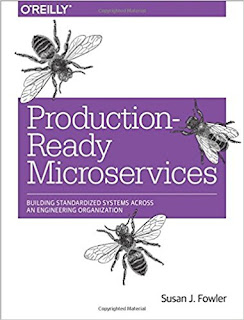In general, I think the principles described here apply very much to any service-oriented initiative, even more so if the services are coarse grained and hence require more maintenance than finely isolated ones.
Uber
The book extrapolates from the author's experience at Uber "standardizing over a thousand microservices". Given a few developers for each microservice team, that makes up 2000-3000 engineers from the total >10000 Uber employees (I wonder how many are lawyers). After WhatsApp's famous story of being acquired at 55 employees in total, that really highlights the difficulty level of running a business and operations all over the physical world (sending cars and drivers around in dozens of countries) with respect to a digital-only enterprise. We should remember this and many other directions of change the next time we hear a technology advocate saying how much the cost of his 2-people startup has been reduced by $technology.The main message
You should be this tall to use microservices; this architecture doesn't necessarily fit every context; although integrating separate services of some size is becoming a standard after the API revolution (before that, it was integrate through the database which is arguable worse).You will encounter many different social and technical problems, such as:
- Inverse Conway's Law, with the shape of the products defining the shape of the company. Although I found out this doesn't really apply at smaller scales as development teams can own more than one service and experience a successful decoupling between people and code.
- Technical sprawl, where multiple languages, databases and other key choices spread without a consistent, central planning.
- More ways to fail: distributed and concurrent systems are more difficult to work with and to reason upon, plus the fact that there are more servers, containers or applications will simply multiply the failures you'll see.
One particular aspect of the Consistency is important lesson is that the whole lifecycle of services should be considered. Maintenance and even decomissioning are as important as producing new MVPs: but I've seen many times services being neglected, or being considered very easy to migrate away from one some new shiny substitute was available. In reality, it takes time and effort to keep services up and running, and to finally kill them when you have an alternative, as data and users are slowly migrated off from the old to the new platform.
Lots of requirements are also overlooked but often turn out to be important as you increase your population of services: the scalability of a single endpoint, fault tolerance, even documentation (ADR are the only form I trust very much right now in a fast-moving organization context.) Every single section of this book will make you think about it, but won't give much of an overview: you're better served by reading the SRE book for example.


